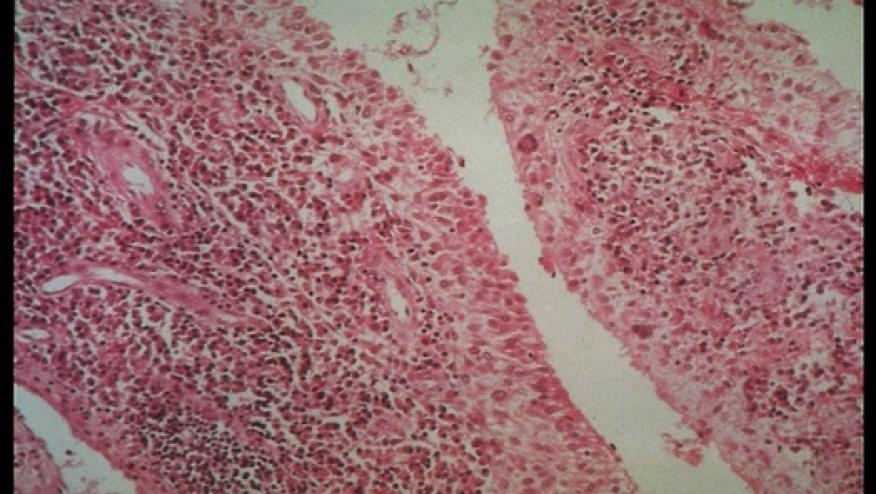Might Synovial Biopsy Predict Rheumatoid Treatment Responses? Save

Multi-modal analysis of rheumatoid arthritis (RA) synovitis pathotypes enables more accurate choices of first line cDMARDs treatment, suggesting a predictive value to synovial biopsy.
The synovial tissue inflammation seen in RA shows high degree of heterogeneity – which may be a factor in people’s variable response to treatments. We also know that distinct synovial tissue macrophage subsets regulate inflammation and remission in rheumatoid arthritis.1 The potential of high-throughput analyses has been shown, and these technologies can help dissect disease heterogeneity and identify novel biomarkers that could be used in prognosis.2
To explore this further, 373 treatment-naïve RA patients were enrolled and given an ultrasound-guided synovial tissue biopsy. The synovitis degree and synovial pathotype was then determined for each individual. A subset of 45 samples was used for synovial tissue macrophage phenotyping and profiling in order to measure the abundance of distinct macrophage populations. Moreover, the transcriptomic profile of CD68pos cells in distinct regions of interest within the synovial tissue was determined using spatial technology. After study entry, patients were managed with a treat-to-target strategy.
The findings showed that those patients who reached disease remission at 6 months had lower Krenn Synovitis Score (KSS) at baseline compared to people who did not achieve this outcome. People who had been stratified based on synovial pathotype as lympho-myeloid or diffuse-myeloid pathotype had a lower response to conventional synthetic disease-modifying antirheumatic drugs (csDMARD) compared to people with a pauci-immune pathotype. However, further analysis suggested that, at an individual level, baseline KSS has limited capacity to distinguish between responders and non-responders, which highlights the need for multi-modal tissue deconvolution.
Flow cytometry analysis revealed that those with lympho-myeloid or diffuse-myeloid pathotypes showed comparable enrichment of two distinct synovial tissue macrophage populations (MerTKposCD206pos and MerTKnegCD206neg), while patients with the pauci-immune pathotype showed a predominance of MerTKposCD206pos. The enrichment of MerTKposCD206pos synovial tissue macrophages was also higher in people who achieved remission at 6 months. Notably, enrichment of these MerTKpos synovial tissue macrophages greater than 44.3% from baseline was shown to be an independent factor associated with achieving remission at 6 months.
Digital spatial profiling of synovial tissue biopsies revealed differential gene networks activating the macrophages in distinct tissue locations. This method was also able to identify transcriptomic signatures of synovial tissue macrophages in the lining and sublining location that were associated with response to csDMARD. Integration of sequencing and transcriptomic data resulted in the group being able to map synovial tissue macrophages clusters and stratify them based on treatment response.
Such multi-modal analysis of synovitis could enable differentiation of treatment-naïve RA patients at their first medical evaluation, and the data strongly support the predictive value as a patient-based decision test tool.
Source










If you are a health practitioner, you may Login/Register to comment.
Due to the nature of these comment forums, only health practitioners are allowed to comment at this time.